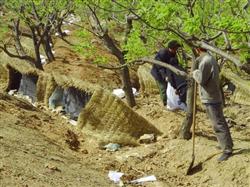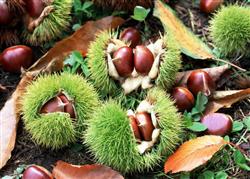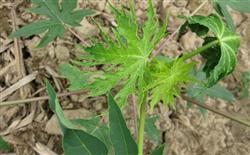Chestnut planting: how to manage chestnut after harvest?

How to manage Chinese chestnut after harvest? What are the good management methods for chestnut trees? please introduce that chestnut trees are generally harvested from September to October. It is necessary to strengthen management according to the physiological characteristics of chestnut trees in order to ensure the total yield and quality in the coming year. Detailed methods can refer to the following methods: 1. Fertilization of chestnut trees: spraying foliar fertilizer or root fertilization as soon as possible after harvest to restore tree potential and enhance leaf photosynthetic capacity. Ensure that there are sufficient nutrients for flower bud differentiation. Foliar fertilizer can use 0.3% potassium nitrate, potassium dihydrogen phosphate, urea solution and so on. It is required to spray in the morning and evening and apply evenly on the surface and back of the leaf. Root fertilization, the general application of 500 grams of 750 grams of urea, 200 grams of 300 grams of potash fertilizer. Increase the application of organic fertilizer after falling leaves at the end of autumn. Strip ditch application, annular ditch application and radial ditch application were adopted, and 1000-2000 kg organic fertilizer was applied per mu. 2. Prevention and control of diseases and insect pests of chestnut trees: after fruit harvest, attention should be paid to clearing the garden in time, cutting off withered branches and serious branches of diseases and insect pests, removing branches and leaves of diseases and insect pests falling off on the ground, and centrally burning or burying them. 3. Watering of chestnut trees: chestnut orchards with water sources should be watered in time; those that rely on natural rainfall should be trimmed in time to ensure the late growth of chestnut trees and the use of water for nutrient accumulation, so as to lay a good foundation for production next year. 4. Loosening the soil of chestnut orchard: ploughing the soil of chestnut orchard in time, and burying weeds shallowly in the projection area of tree crown, in order to loosen the soil and increase soil organic matter. Generally combined with the application of base fertilizer, the depth is generally 20cm to 30cm. Pay attention to the deep periphery of the crown and the shallowness around the trunk when ploughing. When turning the soil, purposefully damage a small part of the root system in order to produce new roots and enhance the absorption of fertilizer and water. In addition, when turning the soil, it should be combined with the renovation and maintenance of the land terrace, so that the land can conserve water and fertilizer. 5. Pruning and shaping of chestnut trees: the number and strength of fruiting mother branches on chestnut trees are important indicators for determining next year's yield. The main purpose of pruning is to promote the inside and outside, upper and lower parts of the chestnut tree to produce strong fruiting mother branches, make full use of the space, increase the fruiting parts as much as possible, prevent the branches outside the crown from being too dense and too high, and ensure ventilation and light in the inner chamber. All the slender branches and male flower branches that are too dense should be removed, a small part of the branches should be truncated, and strong regeneration branches should be cultivated so as to lay a foundation for the next year. In accordance with the principle of pruning early rather than late, light rather than heavy, cut off disease and insect branches, withered branches, overlapping branches, thin and weak branches and drooping branches, and the cut branches should be taken out of the orchard for treatment or burning. Click to get more chestnut planting techniques click to get more fruit planting techniques
- Prev

Chestnut planting: how to harvest chestnut?
How to harvest Chinese chestnut? When is the chestnut usually harvested? What are the main harvesting methods? Please introduce that Chinese chestnut generally matures from September to October. There are generally three harvesting methods for reference: chestnut harvest: chestnut bract method is called chestnut bract method. Hit the chestnut bud.
- Next

Papaya tree cultivation: what is papaya mosaic virus disease?
What is papaya mosaic virus disease? What are the prevention and control methods of papaya mosaic virus disease? Please introduce the harm of papaya mosaic virus: papaya mosaic virus is a destructive disease commonly occurred in papaya producing areas in recent years. After one kind of plant, the disease will occur, with mottled yellow flowers on the leaves and dense new leaves.
Related
- Moge, come on! The staff of the peasant association in the producing area of cantaloupe were frightened when the crowd gathered.
- Causes and Solutions of low Fruit setting rate of Apple
- Symptoms and control measures of passion fruit virus disease
- Fruit growing lesson: how do apple orchards keep high yields?
- Can you build orchards in the mountains? What are the pros and cons?
- How to manage the coloring period of Crisson grape?
- This paper introduces the processing technology of two kinds of fig products.
- How much is a month for retired teachers in rural areas by 2020?
- How can strawberry planting increase sugar content? We should pay attention to management in many aspects.
- What are the cultivation techniques on how to improve the yield of golden fruit?

